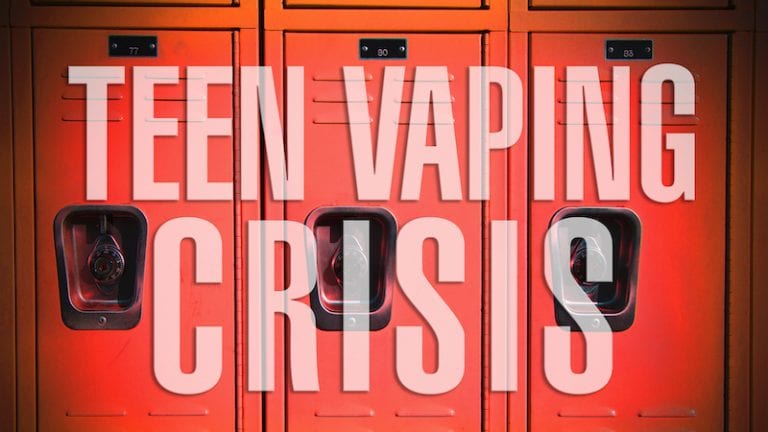Last year, one in three high school seniors used a vape or e-cigarette. So says the study Monitoring the Future, released by the renowned University of Michigan, that surveyed 45,000 students from 380 public and private secondary schools. Here’s the good news: There’s probably very little smoking in the bathroom in most of our high schools. Smoking among teens has been declining for years, but it’s a safe bet that there is vaping. Here’s what every educator needs to know:
1. Vaping and e-cigs are not the same.
Traditional e-cigarettes have a distinct cigarette taste and appeal. Far more popular with teens, vapes are small, refillable devices that heat “vape juice,” atomizing the liquid into a mist. Neither device uses tobacco, but both can deliver nicotine. Vapes can also contain substances like THC, the chemical found in marijuana. However, vapes are often just the juice. According to one recent study, two-thirds of teens who vape use only the flavored vaping juices that contain no nicotine, marijuana, or other drugs.
2. Vaping can be hard to detect.
Vape technology has evolved quickly, making devices small and discreet. While some models are larger and look like refillable lighters with a mouthpiece, others are shaped like fountain pens. A recent story from NPR, entitled “Teenagers Embrace JUUL, Saying It’s Discreet Enough To Vape In Class,” makes it clear that vaping behavior can be easy to miss. The Juul vape looks like a thumb drive and can fit in your fist. Make sure that everyone on your staff knows what vaping devices look like.

Kind of looks like your favorite pen, doesn’t it?
3. Vape manufacturers target our students.
Do you love the flavor of Skittles, or are you more of a Swedish Fish kind of person? Either way, there’s a vape juice for you. The appeal to children is clear. Vape juices come in fruit juice, candy, and breakfast-cereal-style flavors. According to a study by Dr. Adam O. Goldstein of the University of North Carolina, teens perceive that fruit-flavored substances are less harmful. In December 2017, the previously mentioned University of Michigan study reported that 51.8% of high school seniors believe that the substance they were vaping was “just flavoring.”

Yes, honey-nut cereal is now a vape flavor.
4. Many teens don’t understand that vaping is harmful.
Many people, teens included, begin vaping to curb a smoking habit. Most studies uniformly show that vaping is less harmful than smoking tobacco, but the jury is still out on the long-term effects vaping can have on teenagers. Nicotine can impede brain development, and vapes can deliver a high dosage of it. Teenage vapers also report bleeding gums and what is now being a called a “vaper’s cough.” Vaping should be a topic covered in your health curriculum. This article about the negative effects of nicotine and vaping is a good place to start.
5. Marijuana is now odor-free.
Masked by sugary, fruity flavors, vape juice containing THC oil can go undetected. The University of Michigan study reports that while 1 in 10 students say they use vape juice containing nicotine, 1 in 20 teens report vaping marijuana. In other words, if a student has a vape at school, it is likely that you will have no idea what is inside the reservoir.
6. Establish a school-wide protocol on vaping.
For the most part, vaping should fall under the existing school policy on drugs, alcohol, and tobacco, but it can be complicated. A vaping device does not necessarily contain any nicotine. So it’s important to update your policy to specifically address vaping on school grounds and possession of vaping devices. Some schools move directly to suspension, but others are taking a different approach, believing that time hanging out alone at home is not a strong solution for students caught with a vaping device at school. Completion of a drug and alcohol prevention course is another possible consequence; many schools are seeing good results when they use this method.
Join our Facebook group Principal Life for more conversation about and insights into the challenges of school leadership

